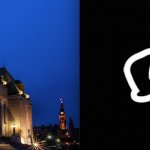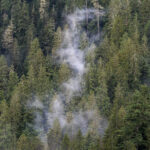Bail hearings, publication bans, burning sources and other lessons for journalists
A real-life case involving a publication ban, a murder suspect set free and the discovery of information that could pit neighbour against neighbor, risk important police sources and potentially leave one journalist open to charges of interfering with an undercover police investigation provides important lessons for journalists.
By Thomas Rose, Law Editor
In my capacity as editor of the law section here at J-Source my advice is often sought out by working journalists, students and academics. Such was the case recently with a journalist working in a medium market somewhere in Canada (I am protecting the journalist’s identity and modifying some details as this person is currently in the midst of compiling an investigative story).
This journalist, who I will call Sam, had been assigned to a routine bail hearing. What transpired, however, was anything but routine. The suspect faced a charge of first-degree murder. Details of the case were horrific, and the community in which the murder occurred had been left shaken. The prosecution was arguing the suspect was a flight risk and should not be granted bail; the defence was arguing the opposite.
As is the suspect’s right under section 517(1) of the Criminal Code, a publication ban on proceedings was requested and granted. A court cannot refuse a suspect’s request for a ban, but it can refuse a request from the prosecution. The idea behind this feature of the law is to err on the side of the suspect in ensuring his right to a fair trial.
If granted, a publication ban generally covers all evidence and information presented, as well as the arguments the defence or prosecution may make. It can even extend to a judge’s reasons for granting or denying bail. Journalists pretty much are restricted to reporting the fact a hearing has been held, whether bail has been granted and the conditions of bail.
Related content on J-Source:
This brings us back to the case at hand.
At the bail hearing, after a publication ban had been imposed and evidence submitted, the prosecution unexpectedly announced it was withdrawing all charges against the suspect. And this is when a reporter covering the hearing, Sam, contacted me.
The Criminal Code states that a section 517 publication ban is temporary, lasting only until the accused is discharged after a preliminary inquiry or the trial is completed, subject to any other court orders. When a ban ends, a reporter is then free to make use of any and all information presented at the hearing. The problem here was that the case never made it to a preliminary hearing, which is where a judge decides whether the Crown has enough evidence to proceed to trial.
Did this mean that Sam was free to publish information presented at the bail hearing?
In this case, the charges had been withdrawn, so the case had ended. As long as no other publication restrictions had been imposed by the court, Sam was free to publish. Incidentally, one of the quickest ways a journalist can determine whether elements of a ban remain in effect is to consult a judge’s original order.
All publication bans are noted in the official court record. Members of the media are permitted to view and photocopy all court files covered by a section 517 publication ban. So, consult the original order, and if time is of the essence, place a quick call to the attorneys involved in the case.
Reassured that it was safe to publish information restricted under the temporary ban, Sam then raised concerns that involved both legal and ethical questions.
[node:ad]The information Sam wanted to pursue involved aspects of the investigation police had conducted while the suspect still faced a murder charge. Police tactics raised the possibility they may have attempted to entrap their suspect. At the very least, the information presented at the bail hearing suggested certain neighbours of the suspect’s may have been enlisted by police to carry out their plans.
Sam was concerned not only that by publishing he might potentially burn valuable sources inside the police force but also that he might cause problems in the community by revealing which neighbours may have been willing to help the police build a case against the suspect.
When the charges were withdrawn, many in the community were left confused and upset. Why was the suspect charged in the first place? Were the charges dropped only because of some legal technicality? Was a murderer still in their midst?
If a journalist possesses information that could address the concerns of the community then an argument could be made that the journalist is performing a valuable public good by publishing. Likewise, it is true that a good source can be invaluable to a reporter, but ask yourself how valuable that source is if the price of maintaining the relationship is that you must only publish information the source approves of.
Ultimately it is the journalist, in this case Sam, who must make the final decision. At the very least, however, it may be a useful exercise to weigh the perceived value of revealing information of interest to the wider public against the harm it may cause certain individuals, be it a source or members of the community the journalist serves.
Sam was also concerned about potential legal repercussions if he were to reveal sensitive intelligence gathering procedures and tactics employed by police. On this point, my advice was the same I would give to any journalist deliberating whether to peel back the veil on police procedure.
In late 2001 the Supreme Court of Canada revisited the issue of publication bans in a pair of unanimous rulings that rejected a Crown request for a sweeping ban on the reporting of police undercover operations.
Canada “is not a police state,” the court stated, and the public must be free to scrutinize and debate the tactics used in apprehending suspected criminals. “Police practices left unchecked,” the court said, “could erode the fabric of Canadian society and democracy.”
In its decisions, the court reasoned that openness, even when it involves police procedure, benefits an accused person and society in at least two ways. First, it ensures the trial is conducted fairly. Second, scrutiny of police methods by the news media helps the public understand decisions that may leave some people upset, such as setting a suspect free. Openness, the court reasoned, helps citizens understand why a decision was taken.
Bottom line: Sam, as any journalist, is free to publish any and all information presented at a bail hearing where a publication ban has been imposed once the matter has been disposed of by the courts, barring any other restrictions a judge may levy. And Sam, as any journalist, is free to publish information that reveals police undercover operations, barring any other legal restrictions such as may arise with matters of national security.
For more information about publication bans and the obligations placed on journalists, see “Know the rules about publication ban before covering the courts.”
Related content on J-Source:
- Journalists who trespass: Case law is murky on both physical and digital trespass
- Star public editor: Reporters struggle to pry records out of court clerks
- What journalists need to know about newsgathering and the individual’s right to privacy
Tamara Baluja is an award-winning journalist with CBC Vancouver and the 2018 Michener-Deacon fellow for journalism education. She was the associate editor for J-Source from 2013-2014.




